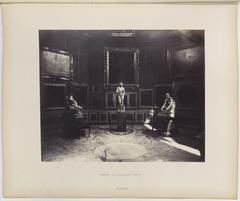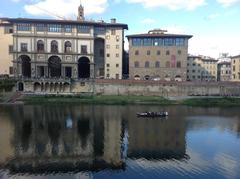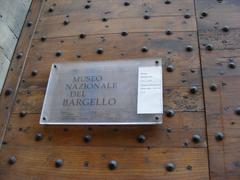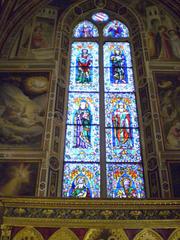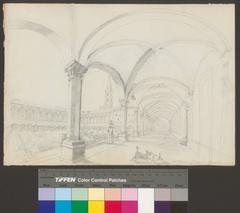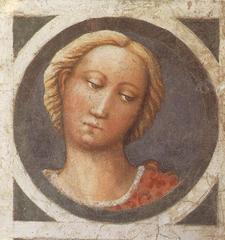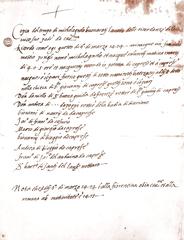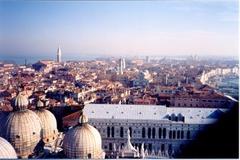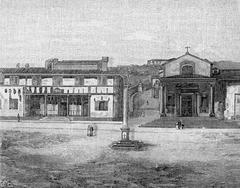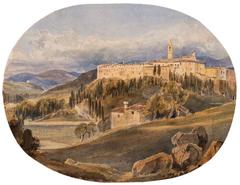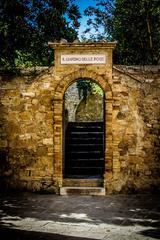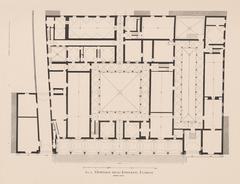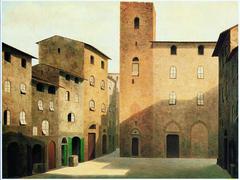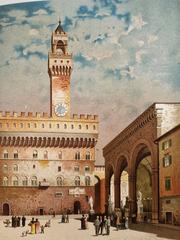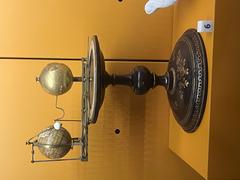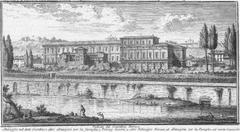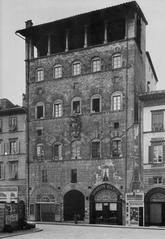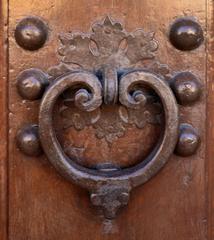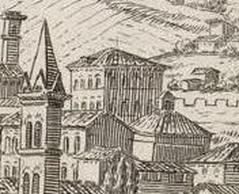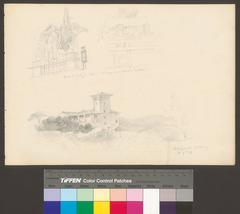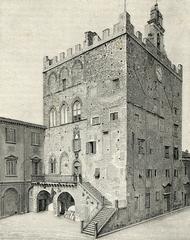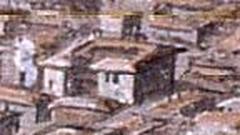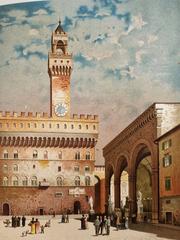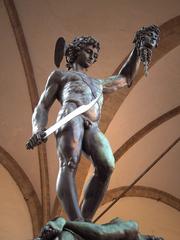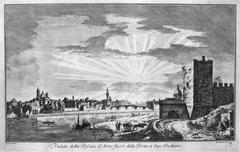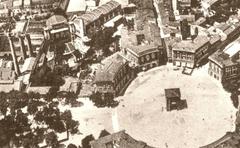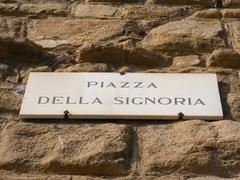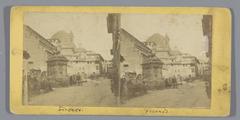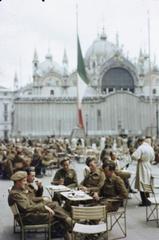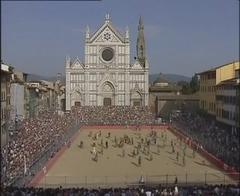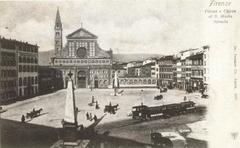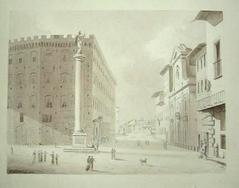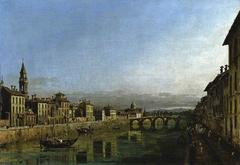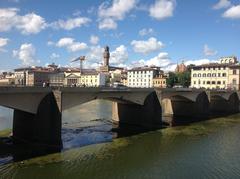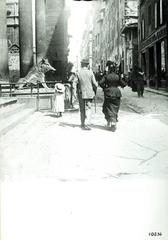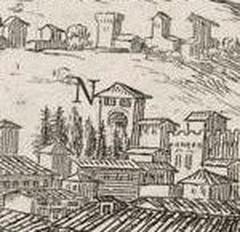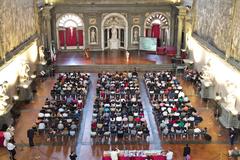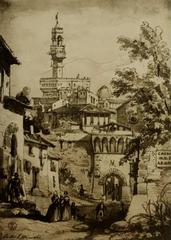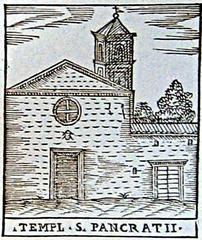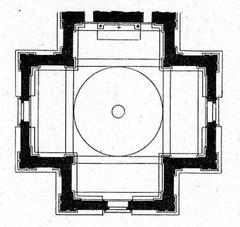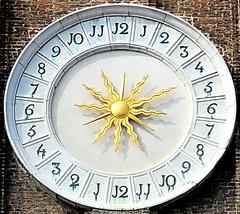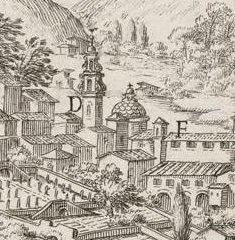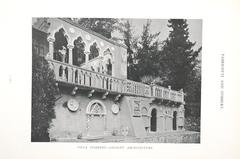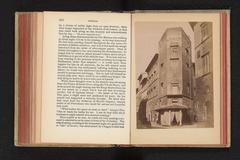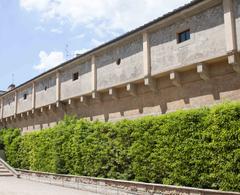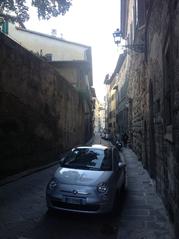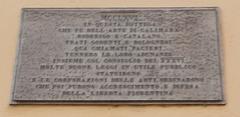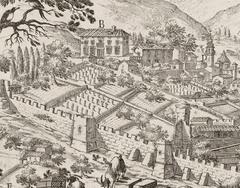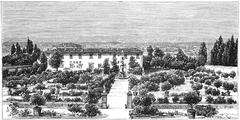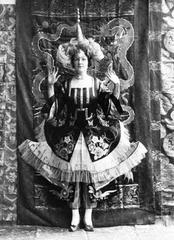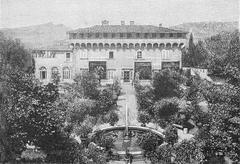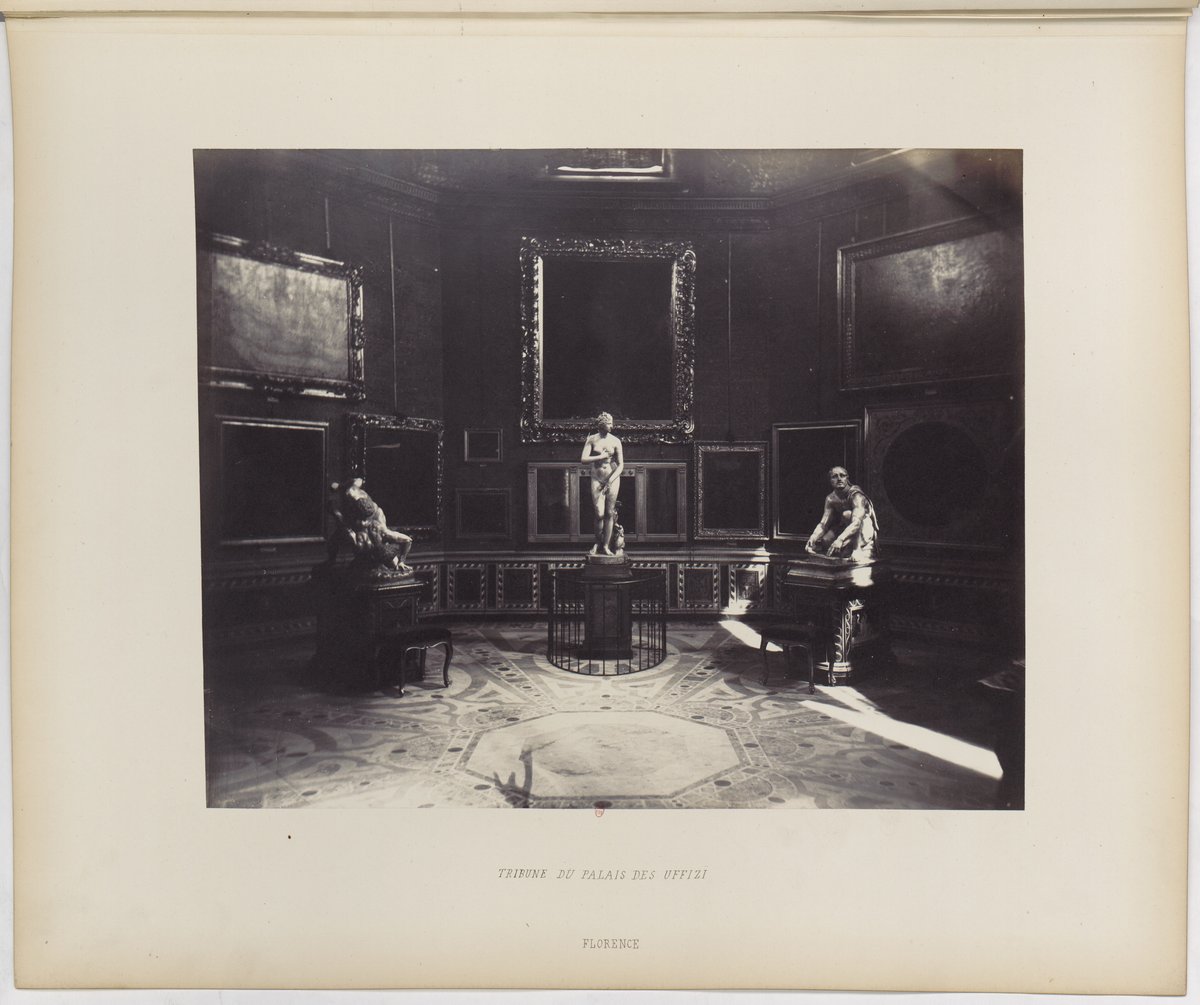
Visiting Hours, Tickets, and Tips for Galleria degli Uffizi, Florence
Published Date: 16/07/2024
Why Visit Galleria degli Uffizi
The Galleria degli Uffizi in Florence, Italy, stands as a monumental testament to Renaissance art and culture. One of the most visited art museums globally, the Uffizi Gallery offers a unique glimpse into the artistic legacy nurtured by the Medici family. Originating in 1560 as a governmental building, the Uffizi was designed by Giorgio Vasari for Cosimo I de’ Medici, the Grand Duke of Tuscany, to house the city’s administrative and judicial offices (Uffizi Gallery) (Florence Inferno). Over time, the gallery transitioned from a private collection to a public museum, first opening its doors to the public in 1769 under Grand Duke Pietro Leopoldo (Uffizi Gallery History). Today, the Uffizi is home to unparalleled collections of Renaissance masterpieces, featuring works by Leonardo da Vinci, Michelangelo, Botticelli, and Raphael, among others. This guide aims to provide comprehensive information on the Uffizi’s history, visitor tips, and nearby attractions, ensuring that visitors can maximize their experience at this iconic institution.
Contents Overview
- Introduction
- History of the Galleria degli Uffizi
- Origins and Construction
- Transformation into an Art Gallery
- Public Access and Expansion
- Architectural Evolution
- Visitor Information
- Tickets and Visiting Hours
- Travel Tips
- Accessibility
- Photography and Conduct
- Facilities and Amenities
- Nearby Attractions
- Special Events and Guided Tours
- FAQ
- Conclusion
Visiting the Galleria degli Uffizi - History, Tickets, and Tips
Introduction
The Galleria degli Uffizi in Florence, Italy, is not only one of the most renowned art museums in the world but also a key part of the city’s rich historical tapestry. This article will take you through the history of the Uffizi, provide practical information about visiting, and offer tips to make the most of your experience.
History of the Galleria degli Uffizi
Origins and Construction
The Galleria degli Uffizi, one of the most renowned art museums in the world, has its origins rooted in the political and cultural ambitions of the Medici family. The construction of the Uffizi began in 1560 under the direction of Giorgio Vasari, a prominent architect and artist of the time, commissioned by Cosimo I de’ Medici, the Grand Duke of Tuscany. The initial purpose of the building was to house the administrative and judicial offices of Florence, hence the name ‘Uffizi,’ which means ‘offices’ in Italian ([Uffizi Gallery](https - //www.uffizi.it)).
Transformation into an Art Gallery
The transformation of the Uffizi from a governmental building to an art gallery began in the late 16th century. Francesco I de’ Medici, Cosimo I’s son, was an avid art collector and decided to convert the top floor of the Uffizi into a gallery to display the Medici family’s extensive art collection. This collection included works by renowned artists such as Michelangelo, Leonardo da Vinci, and Raphael. The gallery was initially private, accessible only to the Grand Duke and his guests ([Florence Inferno](https - //www.florenceinferno.com)).
Public Access and Expansion
The Uffizi Gallery was first opened to the public in 1769, under the reign of Grand Duke Pietro Leopoldo. This move was part of a broader Enlightenment-era trend to make art and culture accessible to the general populace. The gallery’s collection continued to grow through acquisitions and donations, including significant contributions from the Lorraine family, who succeeded the Medici as rulers of Tuscany ([Uffizi Gallery History](https - //www.uffizi.it)).
Architectural Evolution
The architectural evolution of the Uffizi is a testament to its enduring significance. Giorgio Vasari’s original design was expanded upon by subsequent architects, including Alfonso Parigi and Bernardo Buontalenti. Buontalenti, in particular, played a crucial role in the development of the Tribuna, a special octagonal room designed to showcase the most prized pieces of the collection. The Tribuna remains one of the highlights of the Uffizi to this day ([Florence Inferno](https - //www.florenceinferno.com)).
Visitor Information
Galleria degli Uffizi Tickets and Visiting Hours
To make the most of your visit, it’s essential to plan ahead. The Galleria degli Uffizi is open from Tuesday to Sunday, 8 - 15 AM to 6 - 50 PM. It is closed on Mondays, January 1, and December 25. Tickets can be purchased online or at the gallery. Booking in advance is highly recommended, especially during peak tourist seasons.
- **Standard ticket - ** €20 (variable during high season)
- **Reduced ticket - ** €2 (EU citizens aged 18-25)
- **Free entry - ** For EU citizens under 18 and on the first Sunday of every month ([Uffizi Gallery Tickets](https - //www.uffizi.it)).
Travel Tips
- **Best time to visit - ** Early morning or late afternoon to avoid crowds.
- **Guided tours - ** Available in multiple languages and offer detailed insights into the artworks and history of the gallery.
- **Photography - ** Allowed without flash. Some areas may have restrictions.
Nearby Attractions
While in Florence, consider visiting other historical sites nearby, such as -
- **Piazza della Signoria - ** Adjacent to the Uffizi, this square is home to the Palazzo Vecchio and a replica of Michelangelo’s David.
- **Ponte Vecchio - ** A historic bridge filled with shops, offering stunning views of the Arno River.
- **Florence Cathedral - ** Known for its iconic dome, this cathedral is a must-see.
Conclusion
The Galleria degli Uffizi offers a unique journey through art and history, underpinned by the legacy of the Medici family. From its origins as a governmental building to its transformation into a world-class art museum, the Uffizi continues to captivate visitors from around the globe. Plan your visit, explore the rich collections, and immerse yourself in the cultural heritage of Florence.
FAQ
What are the Galleria degli Uffizi visiting hours?
The Galleria degli Uffizi is open from Tuesday to Sunday, 8 - 15 AM to 6 - 50 PM. It is closed on Mondays, January 1, and December 25.
How much are tickets to the Galleria degli Uffizi?
- **Standard ticket - ** €20 (variable during high season)
- **Reduced ticket - ** €2 (EU citizens aged 18-25)
- **Free entry - ** For EU citizens under 18 and on the first Sunday of every month.
Are guided tours available?
Yes, guided tours are available in multiple languages and offer detailed insights into the artworks and history of the gallery.
In summary, the Galleria degli Uffizi’s rich history, from its origins as a governmental building to its transformation into a world-class art museum, reflects the enduring legacy of the Medici family and the gallery’s ongoing commitment to preserving and showcasing some of the world’s greatest artistic treasures. For the latest updates and to plan your visit, check out the official [Uffizi Gallery website](https - //www.uffizi.it).
Explore the Uffizi Gallery - Visiting Hours, Tickets, and Historical Insights
Introduction
The Uffizi Gallery, located in Florence, Italy, is a treasure trove of Renaissance art and architecture. This article will guide you through its historical, architectural, and artistic significance, while also providing essential visitor information, travel tips, and nearby attractions to enhance your experience.
Historical Significance
The Uffizi Gallery, or Galleria degli Uffizi, is one of the most renowned art museums in the world, located in Florence, Italy. Its historical significance is deeply intertwined with the Medici family, who were influential patrons of the arts during the Renaissance. The gallery was originally designed by Giorgio Vasari in 1560 for Cosimo I de’ Medici to house the administrative and judicial offices of Florence, hence the name “Uffizi,” which means “offices” in Italian ([Uffizi Gallery History](https - //www.uffizi.it/en/the-uffizi)).
The Medici family’s extensive art collection, which forms the core of the Uffizi’s holdings, was bequeathed to the city of Florence by Anna Maria Luisa de’ Medici, the last of the Medici line, in 1737. This act ensured that the collection would remain in Florence and be accessible to the public, marking the Uffizi as one of the first modern museums ([Medici Legacy](https - //www.uffizi.it/en/history)).
Architectural Significance
The Uffizi Gallery is an architectural marvel of the Renaissance period. Designed by Giorgio Vasari, the building is a prime example of Mannerist architecture, characterized by its elongated structure and the use of classical elements in innovative ways. The U-shaped building, with its long corridors and large windows, was revolutionary at the time and set a precedent for future museum designs ([Vasari’s Design](https - //www.uffizi.it/en/uffizi-architecture)).
Artistic Significance
The Uffizi Gallery houses an unparalleled collection of Renaissance art, making it a cornerstone of Western art history. The gallery’s collection includes masterpieces by artists such as Leonardo da Vinci, Michelangelo, Raphael, Titian, and Caravaggio. Notable works include Botticelli’s “The Birth of Venus” and “Primavera,” Leonardo da Vinci’s “Annunciation,” and Michelangelo’s “Doni Tondo” ([Uffizi Masterpieces](https - //www.uffizi.it/en/artworks)).
The gallery’s extensive collection provides a comprehensive overview of the development of Italian art from the 12th to the 17th centuries. This makes the Uffizi an essential destination for art historians and enthusiasts alike, offering insights into the evolution of artistic techniques, themes, and styles over several centuries ([Art Collection](https - //www.uffizi.it/en/artworks)).
Visitor Information
Visiting Hours
The Uffizi Gallery is open Tuesday through Sunday from 8 - 15 AM to 6 - 50 PM. The gallery is closed on Mondays, January 1st, and December 25th. It’s advisable to check the official website for any changes in visiting hours before planning your visit.
Tickets
Tickets can be purchased online or at the gallery. Prices vary depending on the season and any special exhibitions. General admission is typically around €20, with discounts available for students, seniors, and children. Booking in advance is recommended to avoid long lines ([Uffizi Gallery Tickets](https - //www.uffizi.it/en/tickets)).
Travel Tips
The Uffizi Gallery is located in the heart of Florence, making it easily accessible by public transport, bike, or on foot. Consider arriving early to avoid crowds, and don’t forget to bring a camera for the stunning views of the Arno River from the gallery’s windows.
Accessibility
The Uffizi Gallery is committed to being accessible to all visitors. The building is equipped with elevators and ramps, and there are special services available for visitors with disabilities. For more detailed information, visit the gallery’s official accessibility page.
Nearby Attractions
While in Florence, don’t miss other historical sites such as the Florence Cathedral (Duomo), the Ponte Vecchio, and the Palazzo Vecchio. These landmarks are all within walking distance of the Uffizi Gallery and offer a deeper dive into Florence’s rich history.
Special Events and Guided Tours
The Uffizi Gallery hosts special events and temporary exhibitions throughout the year. Guided tours are available in multiple languages and can provide a more in-depth understanding of the gallery’s vast collection. Check the official website for the latest information on events and tours.
FAQ Section
What are the Uffizi Gallery’s visiting hours?
The Uffizi Gallery is open Tuesday through Sunday from 8 - 15 AM to 6 - 50 PM. It is closed on Mondays, January 1st, and December 25th.
How much are tickets to the Uffizi Gallery?
General admission tickets typically cost around €20, with discounts available for students, seniors, and children.
Is the Uffizi Gallery accessible to visitors with disabilities?
Yes, the gallery is equipped with elevators and ramps, and offers special services for visitors with disabilities.
Conclusion
The Uffizi Gallery is a must-visit destination for anyone interested in art, history, and culture. With its rich historical background, stunning architecture, and an unparalleled collection of Renaissance masterpieces, it offers a unique and enriching experience. Plan your visit today to explore this iconic institution and immerse yourself in the beauty of Italian art. For more updates and detailed information, check out our other related posts and follow us on social media.
Essential Visitor Tips for Galleria degli Uffizi - Tickets, Best Times, and More
Introduction
Planning a visit to the Galleria degli Uffizi in Florence? This comprehensive guide covers everything you need to know, from ticket booking and best visiting times to guided tours and nearby attractions. Whether you’re an art aficionado or a casual tourist, our tips will help you make the most of your visit to one of the world’s most prestigious art museums.
Ticket Booking and Entry
To avoid long queues and ensure entry, it is highly recommended to book tickets in advance. The Galleria degli Uffizi offers several ticket options, including standard admission, guided tours, and combined tickets with other museums. Tickets can be purchased online through the official [Uffizi Gallery website](https - //www.uffizi.it/en/tickets). Booking in advance not only secures your entry but also allows you to choose a specific time slot, which helps in managing the flow of visitors and reducing wait times.
Best Time to Visit
The Uffizi Gallery is one of the most visited museums in the world, attracting millions of tourists annually. To experience the gallery with fewer crowds, consider visiting during the off-peak seasons, which are typically from November to March. Weekdays, especially early mornings and late afternoons, are generally less crowded compared to weekends and holidays. The gallery is closed on Mondays, so plan your visit accordingly.
Guided Tours and Audio Guides
For a more enriching experience, consider joining a guided tour or renting an audio guide. Guided tours are available in multiple languages and provide in-depth insights into the artworks and the history of the gallery. Audio guides can be rented at the entrance and offer detailed explanations of the major exhibits. Both options enhance the visitor experience by providing context and background information that might not be immediately apparent.
Accessibility
The Uffizi Gallery is committed to being accessible to all visitors. The museum is equipped with elevators and ramps to accommodate visitors with mobility issues. Wheelchairs are available upon request at the entrance. Additionally, the gallery offers special tours and services for visitors with visual and hearing impairments. For more information on accessibility services, visit the [Uffizi Gallery accessibility page](https - //www.uffizi.it/en/accessibility).
Photography and Conduct
Photography is allowed in most areas of the Uffizi Gallery, but the use of flash and tripods is strictly prohibited to protect the artworks. Visitors are encouraged to be respectful and maintain a quiet atmosphere, as the gallery is a place of cultural and historical significance. Touching the artworks is not allowed, and visitors should maintain a safe distance from the exhibits. Some of the best photographic spots include the gallery’s stunning corridors and the view from the terrace café.
Facilities and Amenities
The Uffizi Gallery offers a range of facilities to ensure a comfortable visit. There are restrooms located on each floor, and a cloakroom is available for storing bags and coats. The gallery also has a café and a bookshop where visitors can purchase souvenirs, books, and replicas of famous artworks. For those looking to take a break, the café offers a selection of refreshments and a terrace with a stunning view of Florence.
Nearby Attractions
The Uffizi Gallery is located in the heart of Florence, making it convenient to visit other nearby attractions. The Ponte Vecchio, a historic bridge lined with shops, is just a short walk away. The Palazzo Vecchio, Florence’s town hall, and the Piazza della Signoria, a bustling square filled with sculptures and historical buildings, are also nearby. Combining a visit to the Uffizi with these attractions can make for a full day of exploring Florence’s rich cultural heritage.
Safety and Security
The Uffizi Gallery has implemented several safety and security measures to ensure the well-being of its visitors and the protection of its artworks. Security checks are conducted at the entrance, and large bags and backpacks are not allowed inside. Visitors are advised to keep their personal belongings secure and be aware of their surroundings. In case of emergencies, the gallery has clearly marked exits and trained staff to assist visitors.
Special Exhibitions and Events
The Uffizi Gallery frequently hosts special exhibitions and events that showcase different aspects of art and culture. These temporary exhibitions often feature works from other renowned museums and private collections. Information about current and upcoming exhibitions can be found on the [Uffizi Gallery events page](https - //www.uffizi.it/en/events). Attending these special exhibitions can provide a unique and varied experience beyond the permanent collection.
Tips for Families
Visiting the Uffizi Gallery with children can be a rewarding experience with a bit of planning. The gallery offers family-friendly tours and activities designed to engage young visitors. Interactive guides and educational materials are available to help children appreciate the art in a fun and accessible way. It’s also a good idea to plan breaks and visit the café for refreshments to keep the little ones energized.
Language and Communication
While most of the information and signage in the Uffizi Gallery is available in Italian, English translations are widely provided. The staff at the gallery are generally proficient in English and can assist with any questions or concerns. For non-Italian speakers, guided tours and audio guides in multiple languages are available to ensure a comprehensive understanding of the exhibits.
Brief History and Cultural Significance
The Uffizi Gallery, established in 1581, is one of the oldest and most famous art museums in the world. It houses a vast collection of Renaissance art, including masterpieces by Leonardo da Vinci, Michelangelo, and Botticelli. The gallery’s historical significance and architectural beauty make it a must-visit destination for art lovers and history enthusiasts alike.
FAQ
Q - What are the Galleria degli Uffizi visiting hours?
A - The Uffizi Gallery is open from Tuesday to Sunday, 8 - 15 AM to 6 - 50 PM. It is closed on Mondays, January 1st, and December 25th.
Q - How can I book tickets for the Galleria degli Uffizi?
A - Tickets can be booked online through the official [Uffizi Gallery website](https - //www.uffizi.it/en/tickets) to avoid long queues and ensure entry.
Q - Are guided tours available at the Uffizi Gallery?
A - Yes, guided tours are available in multiple languages and provide in-depth insights into the artworks and history of the gallery.
Q - Is the Uffizi Gallery accessible for visitors with disabilities?
A - Yes, the gallery is equipped with elevators, ramps, and wheelchairs are available upon request. Special tours and services are also offered for visitors with visual and hearing impairments.
Visit and Stay Up to Date
Stay up to date with the latest information and events by following the Uffizi Gallery on social media or visiting their official website. For a more interactive experience, consider downloading the Uffizi Gallery’s mobile app, which offers additional insights and features to enhance your visit.
By following these tips, visitors can make the most of their visit to the Galleria degli Uffizi, ensuring a memorable and enriching experience in one of the world’s most prestigious art museums.
Summary and Final Tips
The Galleria degli Uffizi is not merely an art museum but a journey through the rich tapestry of Renaissance history and culture. From its origins as a governmental building to its transformation into one of the world’s most prestigious art galleries, the Uffizi continues to captivate visitors with its extensive collection of artistic masterpieces and architectural grandeur. Understanding its deep historical roots and the significant contributions of the Medici family enhances the appreciation of the artworks displayed. Practical visitor information, including ticketing options and travel tips, ensures a seamless and enriching experience. Whether you’re an avid art enthusiast or a casual tourist, the Uffizi Gallery offers an unforgettable exploration of Florence’s cultural heritage. For the most up-to-date information and to plan your visit, be sure to check the official Uffizi Gallery website.
Sources and Further Reading
- Uffizi Gallery, 2024, https://www.uffizi.it
- Florence Inferno, 2024, https://www.florenceinferno.com
